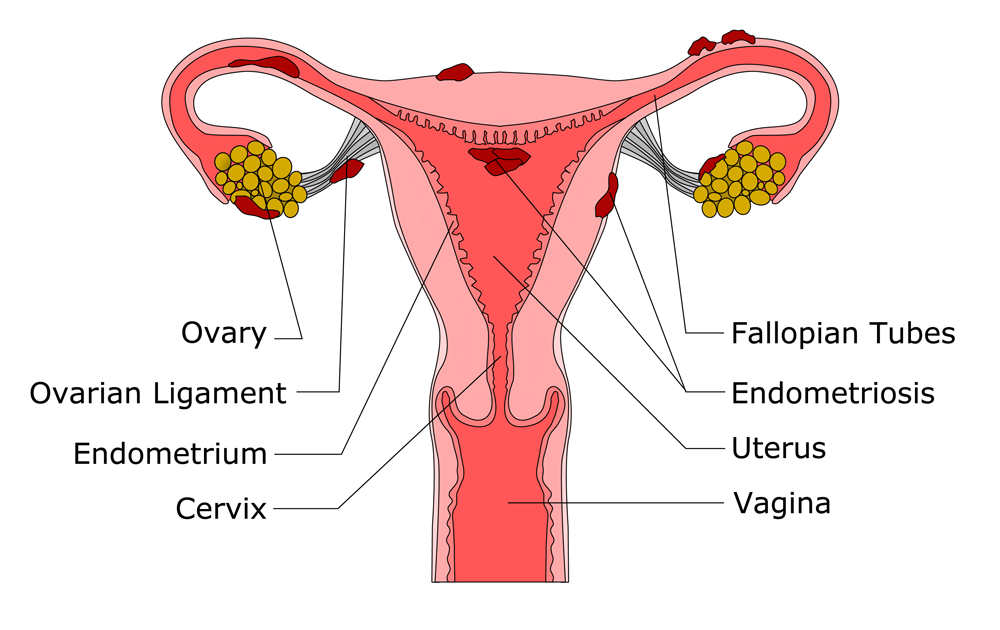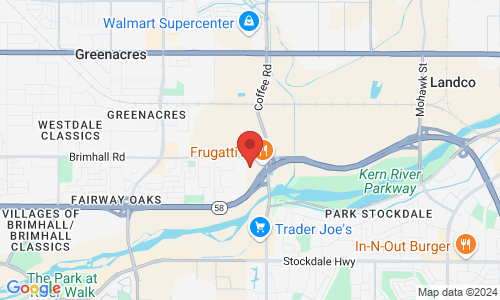
Endometriosis Treatment
Our four office locations in Bakersfield, Thousand Oaks, Los Angeles, and Encino, CA, serve patients throughout Southern California.
Understanding Endometriosis
The endometrium, or endometrial tissue, normally lines the inside of the uterus and is shed with each period. Endometriosis is a condition involving the abnormal growth of the endometrial tissue outside of the uterus. The misplaced tissue has no way to exit the body, and can cause cysts, scar tissue, and adhesions. While there is not enough evidence to show that endometriosis alone causes infertility, the condition can make it difficult to conceive naturally and increase the risk of complications during pregnancy.
A Closer Look...

Are My Symptoms Endometriosis?
It is estimated that up to 10 percent of American women in their childbearing years suffer from endometriosis. Endometriosis symptoms include pelvic pain, pain during intercourse, and pain during bowel movements, all of which may increase around the time of your menstrual period. Patients may also experience heavy menstrual bleeding and severe bloating or nausea during their menstrual cycle. Still, many women do not realize they have the condition until attempting to get pregnant.
It is important to understand that the severity of pain does not necessarily indicate the extent of the condition. Many patients with severe pain suffer from a more mild stage of the disease. While pain is a common sign of endometriosis, it may also indicate another problem such as ovarian cysts or pelvic inflammatory disease. If you are experiencing pain or any other symptoms, we recommend scheduling an exam at Los Angeles Reproductive Center to get an accurate diagnosis.
Laparoscopy
While minimally invasive screening methods can be useful, the only way to properly diagnose endometriosis is through laparoscopy. In this minor surgical procedure, our doctors insert a laparoscope (a thin tube with a camera at the end) through a small incision in the abdomen. The laparoscope will help us pinpoint the location and extent of endometrial growths, and determine the best form of treatment.
Treatment Options for Endometriosis
Pain Medication
As you may know, birth control is one of the main treatments to target the painful symptoms of endometriosis. But as you discontinue your birth control in the attempt to become pregnant, your side effects can return. We may recommend non-steroidal anti-inflammatory drugs or other pain medications to help you manage pelvic pain in the meantime.
Hormone Therapy
Some hormones including GnRH have been shown to suppress the growth of endometriotic tissues. While GnRH hormone treatment can be very useful to treat pelvic pain, it may also affect fertility. We can discuss different options and the possibility of combining hormone therapy with IVF to maximize your chances of becoming pregnant.
Conservative Surgery
Laparoscopic surgery is also used to remove endometriotic growths that affect the reproductive organs. Many patients with mild to moderate endometriosis have found success with natural conception after excision surgery. Surgery can remove endometrial tissue to improve the function of the ovaries and fallopian tubes.
IVF
Fertility treatments such as IVF are generally considered one of the best options for patients who are struggling with conception due to endometriosis. During IVF, fertilized eggs are implanted into the uterus to increase the chances of pregnancy and successful live birth. Depending on your condition, we may recommend IVF early on in the process, or if other options fail to result in pregnancy.
"Dr. Kalan is a fertility Superhero! He is kind, extremely knowledgeable, patient (this is rare in fertility docs) and treated us like he truly cared about our success. He got to the bottom of our fertility issues and created a customized plan for us that ended in success. We are forever grateful to him and his team. I couldn't recommend him more." Shelby S., 5-Star Review




